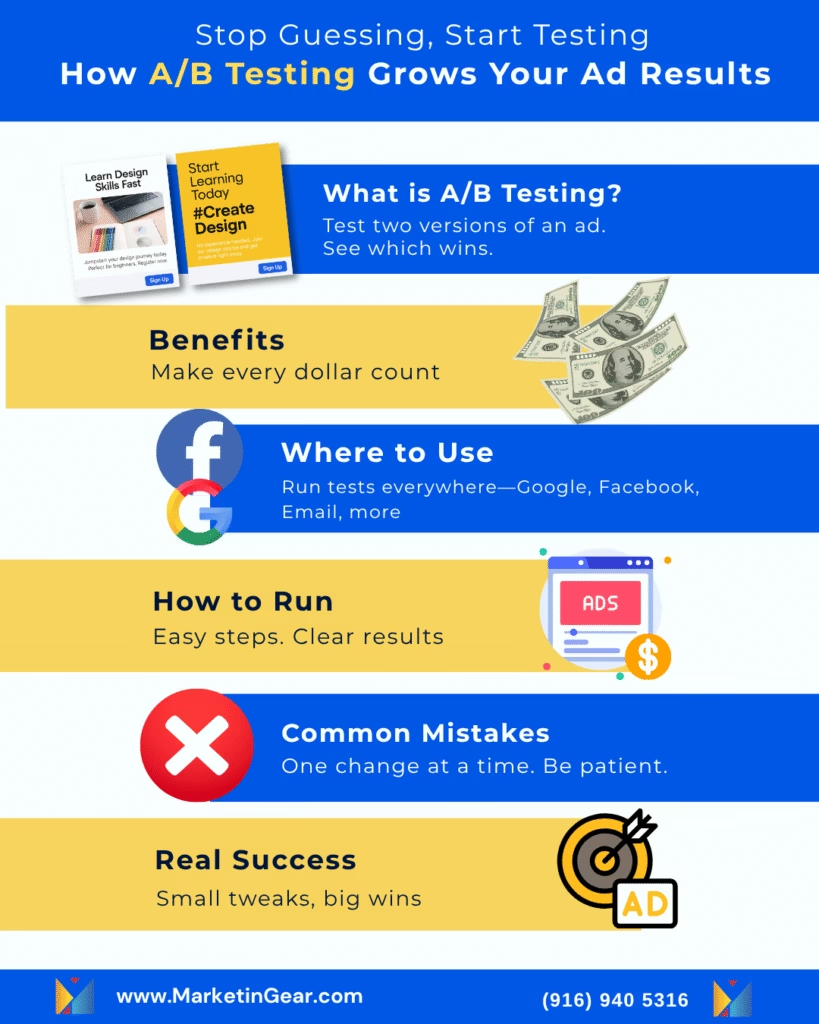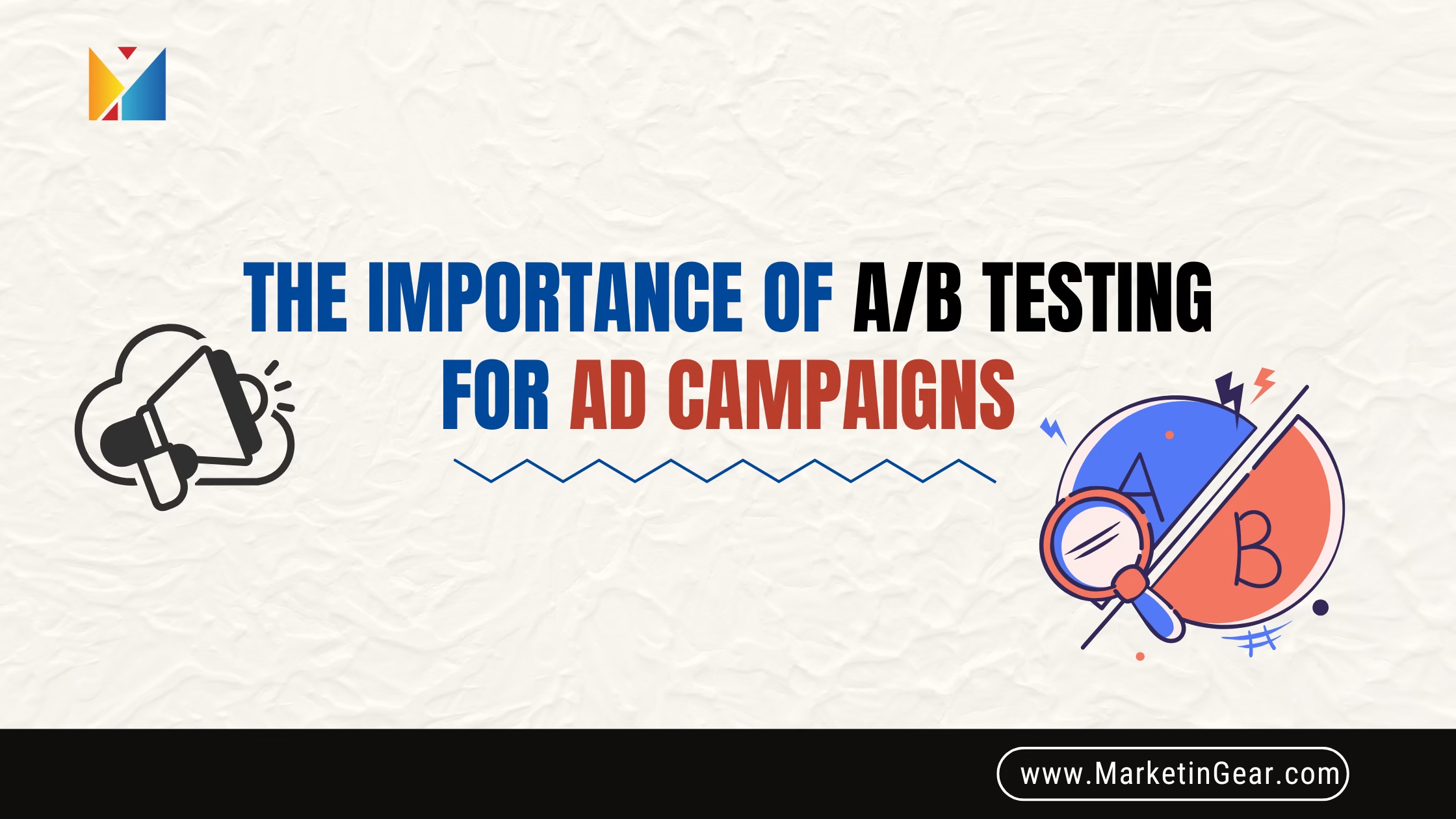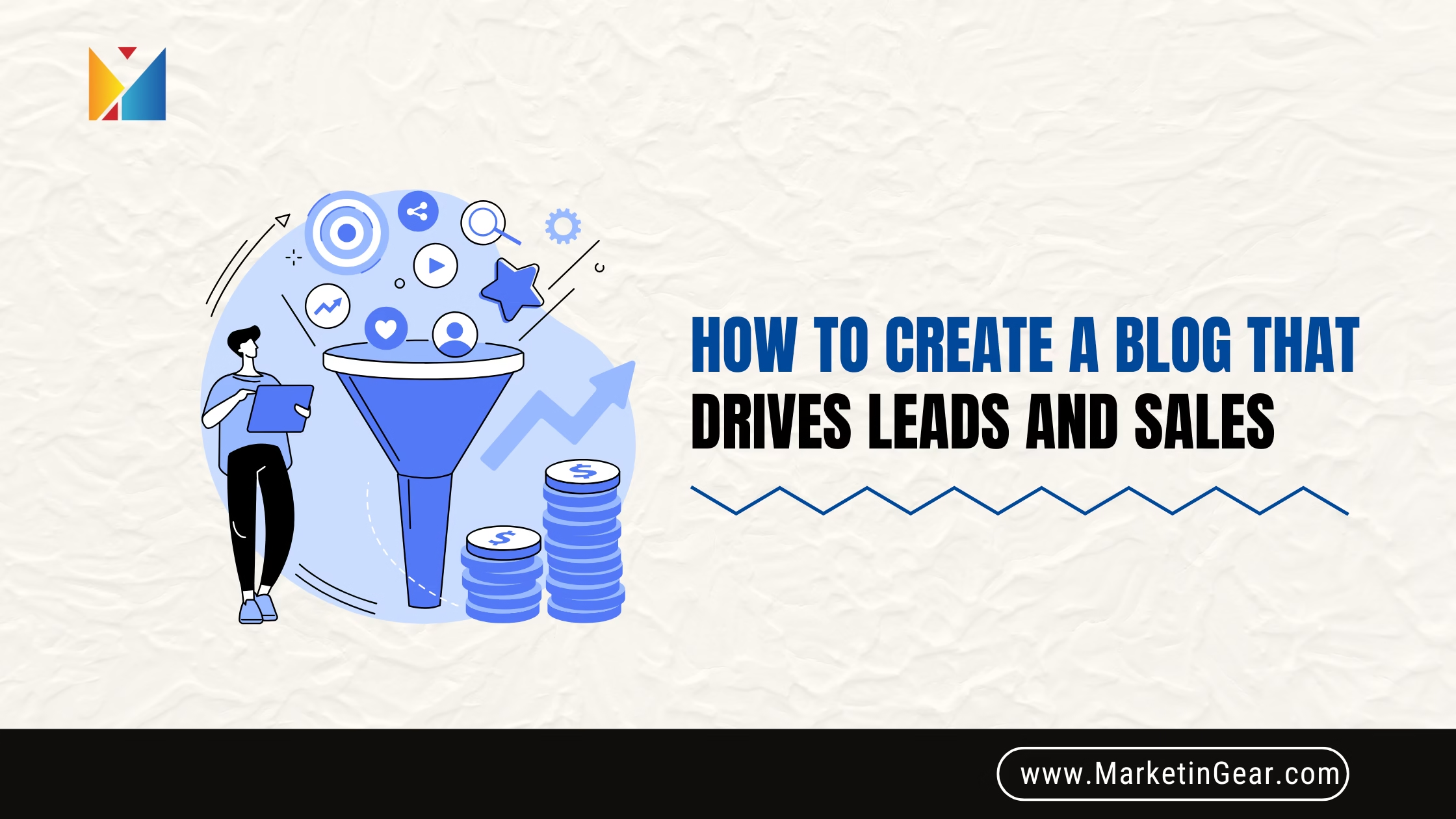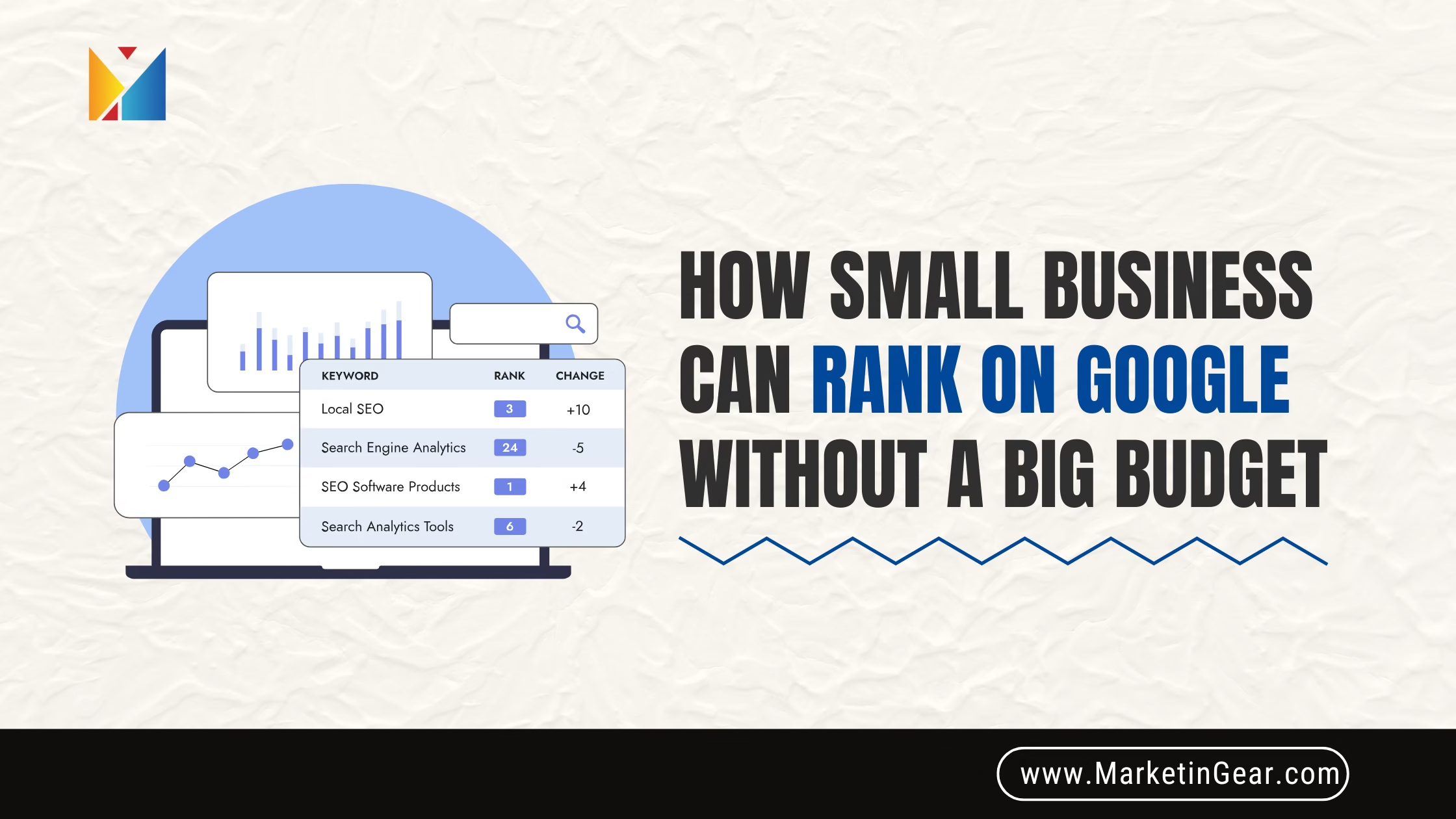Introduction: Why Guess When You Can Know?
Imagine you’re throwing darts at a board with your eyes closed. You might get lucky once, but you’ll miss the bullseye most of the time. That’s what running ads without A/B testing feels like. You spend money, you cross your fingers, but you don’t really know what’s working.
A/B testing opens your eyes. It lets you compare two versions of an ad, side by side, to see which one brings in more clicks, sales, or signups. For small businesses with tight budgets, this isn’t just helpful—it’s essential. Every dollar counts, so why waste any on ads that don’t deliver?
Let’s break down what A/B testing is, why it matters, and how you can use it to squeeze every bit of value from your ad campaigns.

A/B Testing Basics: What Is It and Why Use It?
What is A/B Testing?
A/B testing is a simple idea. You create two different versions of an ad—let’s call them Ad A and Ad B. You show both ads to your audience and see which one performs better. Maybe Ad A has a different headline, a new image, or a stronger call to action. The point is to learn which tiny change makes the biggest difference.
Why Use A/B Testing in Marketing?
Think about baking cookies. You try adding a pinch of cinnamon to one batch and leave the other plain. Then you taste both and see which you like more. That’s A/B testing in a nutshell. In marketing, this approach means you don’t have to rely on guesses or gut feelings. You get real answers, straight from your customers.
The Big Benefits of A/B Testing
1. Every Dollar Works Harder
Small businesses often can’t afford to waste ad spend. A/B testing helps you quickly spot what’s working—and cut what isn’t. This means more clicks, more calls, and more sales without blowing your budget.
2. Your Ads Get Smarter Over Time
Each test teaches you something new about your audience. You start seeing patterns: maybe your customers click more when you ask a question, or they respond better to images with people in them. Over time, your ads get sharper, and your results get stronger.
3. Less Risk, More Reward
It’s risky to bet your whole budget on one ad idea. With A/B testing, you test on a small scale, learn, and then roll out the winner. It’s like taste-testing before serving dinner to guests.
A/B Testing vs Multivariate Testing
A/B Testing is about changing one thing at a time—maybe just the headline or just the image. This keeps things simple and clear.
Multivariate Testing changes several elements at once—like headline, image, and button color all together. This gives you more info, but it’s trickier to see what’s making the difference. For most small businesses, A/B testing is faster, easier, and gives clearer answers.
Where Can You Use A/B Testing? (Spoiler: Almost Everywhere)
- Google Ads: Test different headlines, descriptions, or display URLs.
- Facebook Ads: Try out new images, ad copy, or audience segments.
- Social Media Ads: Test offers, visuals, and captions on Instagram, LinkedIn, or Twitter.
- Email Marketing: Compare subject lines, content, send times, or CTAs.
Real-World Example:
A local bakery wants to promote online orders. They run two Facebook ads—one with a picture of a chocolate cake, another with fresh bread. After a week, they see the cake ad gets twice as many clicks. The bakery shifts their budget to cake ads and doubles their orders. Simple, smart, and measurable.
How to Run A/B Tests for Ads: Step by Step
1. Pick One Variable
Start with a single change: headline, image, button color, or offer. Don’t mix changes—keep it focused.
2. Set a Goal
What do you want? More clicks, more signups, more sales? Pick a clear, measurable goal.
3. Split Your Audience
Show Version A to half your audience and Version B to the other half. Most ad platforms like Google and Facebook can do this automatically.
4. Let the Test Run
Give your test enough time and traffic to get real results. A good rule of thumb: at least a few hundred views per version.
5. Check the Numbers
Look at the results. Which ad got more clicks or sales? The numbers won’t lie.
6. Pick the Winner—and Repeat
Use the winning ad, but keep testing. There’s always something else you can improve.
A/B Testing Best Practices
- Test One Thing at a Time:
Don’t change everything at once. You want to know exactly what made the difference. - Keep It Fair:
Run tests at the same time so outside factors (like holidays) don’t mess with your results. - Use Real Numbers:
Don’t stop a test too early. Wait until you have enough data to trust the results. - Track the Right Metrics:
Don’t just focus on clicks. Sometimes an ad gets lots of clicks but no sales. Make sure you’re measuring what matters. - Document Everything:
Keep notes on what you changed, what you learned, and what worked. This builds your own playbook for future success.
What Can You Test? (A/B Testing Variables)
- Headlines: Does a question work better than a statement?
- Ad Copy: Is short and sweet better, or do details win?
- Images or Videos: People or products? Bright colors or soft tones?
- Calls to Action (CTAs): “Shop Now” vs. “Get Started”—which gets more clicks?
- Landing Pages: Do people buy more when you simplify the checkout form?
How to Measure A/B Testing Results
Look at your chosen goal. Here are common A/B testing metrics:
- Click-Through Rate (CTR): Which ad got more people to click?
- Conversion Rate: Which ad got more people to buy, sign up, or call?
- Cost per Click (CPC): Which ad gave you better value?
- Return on Investment (ROI): Which ad brought in more profit compared to what you spent?
Use the built-in reporting tools in Google Ads, Facebook Ads, or your email marketing platform. Most will break down these numbers for you.
A/B Testing Tools: What Should You Use?
You don’t need to be a tech wizard. There are plenty of easy-to-use A/B testing tools:
- For Google Ads: Google Ads Experiments
- For Facebook Ads: Facebook’s A/B Test feature in Ads Manager
- For Email: Mailchimp, HubSpot, or ConvertKit
- For Websites & Landing Pages: Google Optimize, Optimizely, Unbounce
Choose what matches your current platform and budget. Most tools offer step-by-step guidance.
Common A/B Testing Mistakes (And How to Avoid Them)
- Testing Too Many Things at Once:
You won’t know what change made the impact. - Quitting Early:
Results can shift in the first few days. Be patient and wait for real trends. - Ignoring Small Wins:
Even a 5% improvement adds up over time. - Forgetting the Customer:
Don’t get lost in numbers. Always think about what your audience actually wants.
Case Studies: Real Success Stories
1. Local Coffee Shop Doubles Morning Orders
A Sacramento coffee shop tested two ads:
Ad A: “Start Your Day with a Smile—Grab a Latte!”
Ad B: “$1 Off Any Coffee Before 9AM!”
Ad B pulled in 30% more morning orders. The shop kept testing, refined their offer, and boosted their monthly sales by 18%.
2. Boutique Retailer Grows Email List
A boutique tried two email sign-up forms:
Form A: “Sign Up for Updates”
Form B: “Get 10% Off Your First Order!”
Form B tripled their email sign-ups. That single test led to hundreds of new customers.
Frequently Asked Questions about A/B Testing
Q: How long should I run an A/B test?
A: At least a week or until you reach a few hundred visitors per version. Longer is usually better.
Q: Can I A/B test with a small audience?
A: Yes, but you’ll need more time to get reliable results.
Q: Is A/B testing only for big companies?
A: No way. It’s especially useful for small businesses with limited budgets.
Q: What if my test results are too close to call?
A: Try testing a bigger change, or give it more time. Sometimes, small tweaks don’t create clear winners.
Conclusion: Stop Guessing, Start Growing
A/B testing takes the mystery out of marketing. You’ll know exactly what works, what doesn’t, and where to spend your money. For small businesses, that’s not just helpful—it’s the key to growing smarter and faster.
Stop tossing money at ads and hoping for the best. Start testing, keep learning, and watch your results (and confidence) climb.
Ready to make every ad dollar count?
Let MarketinGear show you how to unlock the real power of A/B testing for your business. Contact us today for a free strategy session—and see what a smarter, data-driven approach can do for your growth.




